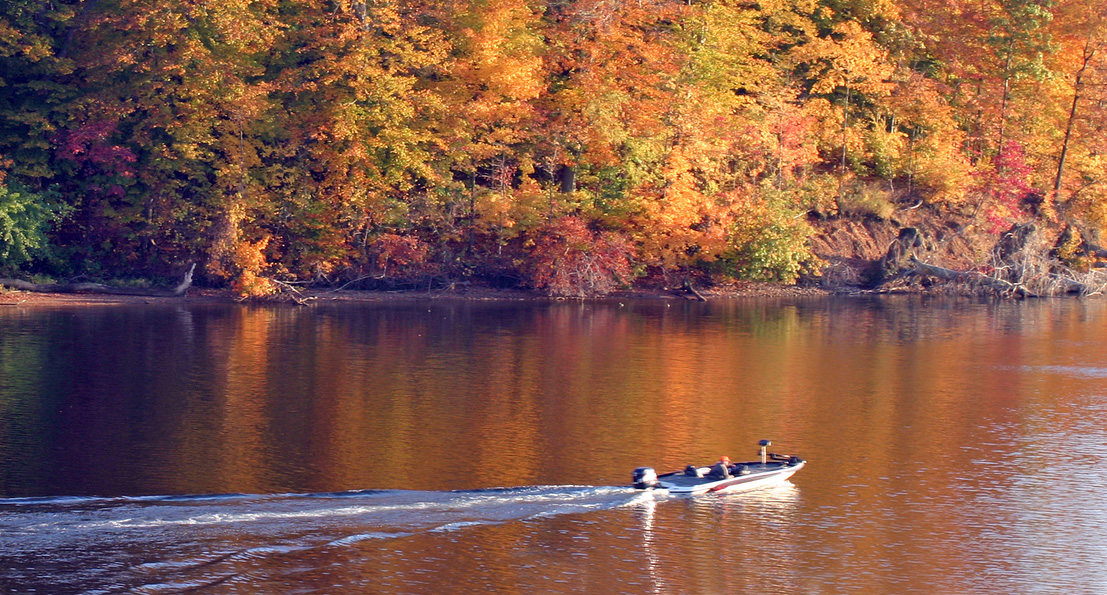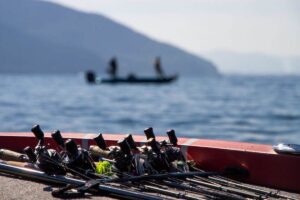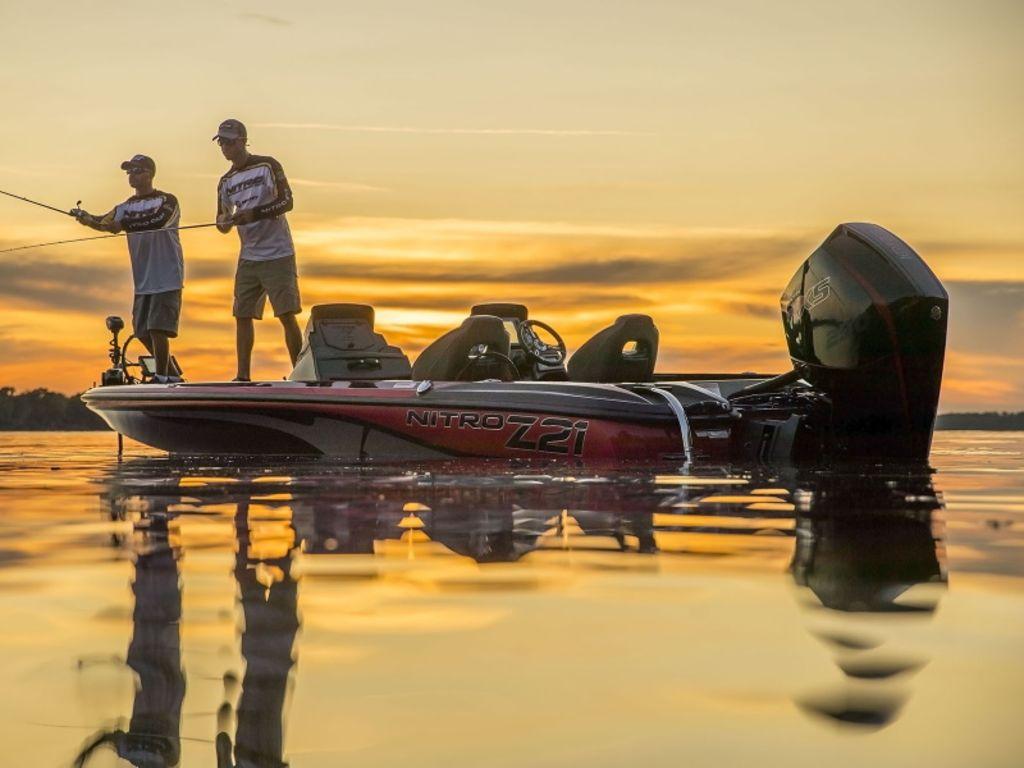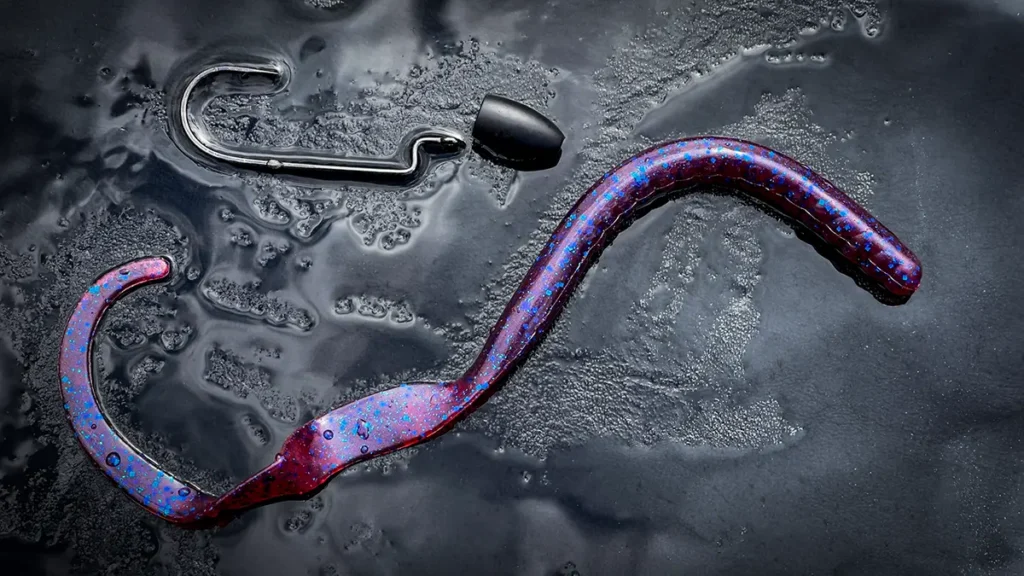As autumn rolls across the country, freshwater anglers know it’s time to chase bass at their hungriest. The cooling water, shorter days, and abundance of baitfish make October through November one of the most productive windows of the entire year for largemouth, smallmouth, and spotted bass. Whether you’re fishing a Southern reservoir, a Northern lake, or a Midwest river system, bass everywhere are preparing for winter—and feeding heavily.
Below, we’ll break down regional opportunities, target species, seasonal behavior, and the best tackle and techniques to help you land more fish this fall.
1. The South (Florida, Alabama, Georgia, Texas, Carolinas)
What’s happening:
In the South, water temperatures are finally dropping out of the high 80s and low 90s, easing into the 70s and 60s. That change sparks a huge increase in bass activity. Shad and bluegill begin moving shallow into creeks and coves, and bass follow. This is one of the best times to catch both numbers and size.
Target species:
- Largemouth Bass – schooling up around bait pods in creeks and grass edges.
- Spotted Bass – active on rocky points and current breaks.
Tips & tackle suggestions:
- Lures: Topwater walkers, squarebill crankbaits, spinnerbaits, and lipless cranks mimic fleeing baitfish perfectly.
- Tackle: Medium-heavy rods with 12–17 lb fluorocarbon or 30–40 lb braid for cover fishing.
- Early mornings and late afternoons are prime times for explosive topwater bites.
- As water cools into November, switch to slower presentations like jigs, Texas rigs, and shaky heads.
2. The Midwest (Missouri, Illinois, Ohio, Wisconsin, Minnesota)
What’s happening:
Midwestern bass begin transitioning from late-summer structure to fall feeding zones. In natural lakes, that means moving from deep weedlines to shallower flats and shorelines chasing schools of perch and shad. Rivers remain excellent as long as water temps stay above 50°F.
Target species:
- Largemouth Bass – roaming flats and creek mouths.
- Smallmouth Bass – staging on gravel bars, riprap, and points.
Tips & tackle suggestions:
- Use crankbaits and swimbaits to cover water until you find active schools.
- Once located, switch to jigs or tubes to trigger bigger fish.
- Don’t overlook sunny afternoons—bass often slide shallow when the surface warms a few degrees.
- A medium-action rod with 10–15 lb fluoro works well for these mixed conditions.
3. The Northeast (New York, Pennsylvania, New England States)
What’s happening:
The northern tier cools fast, and bass respond by feeding heavily before winter slows them down. Smallmouths in particular are aggressive in October, schooling up on rocky humps, shoals, and points. By November, they start moving deeper but can still be caught with slow finesse presentations.
Target species:
- Smallmouth Bass – dominant fall target; fight hard in cold, clear lakes.
- Largemouth Bass – still active in weedy lakes until the first hard freeze.
Tips & tackle suggestions:
- Use spinnerbaits, jerkbaits, and finesse swimbaits for roaming smallmouths.
- For late-fall bites, go subtle: Ned rigs, drop shots, and hair jigs are key.
- Focus on mid-depth rock transitions (8–20 ft) during October, moving deeper (25–40 ft) by mid-November.
- A 7’ medium-light spinning rod with 10 lb braid and an 8 lb fluorocarbon leader gives perfect balance.
4. The West (California, Arizona, Oregon, Washington)
What’s happening:
Western waters—from California’s clear reservoirs to the Pacific Northwest’s rocky lakes—cool more gradually, keeping bass active longer. Shad and trout forage drive bass movement in this region through late November.
Target species:
- Largemouth Bass – chasing bait in open water and near points.
- Spotted Bass – deep schools around structure and humps.
Tips & tackle suggestions:
- Try flutter spoons, underspins, and finesse swimbaits for suspended bass following bait balls.
- On reservoirs like Clear Lake and Shasta, drop-shot rigs and shaky heads shine when bass turn finicky.
- Match your presentation to bait size—this is precision fishing at its best.
- Medium spinning or baitcasting gear with 8–12 lb fluorocarbon is ideal for finesse tactics.
5. Fall Bass Behavior and Seasonal Tips
Feeding Mode:
Bass feed heavily to store energy for the winter slowdown. Expect short but intense bite windows—especially when wind or clouds concentrate bait.
Key Patterns:
- Follow the baitfish. Shad, bluegill, perch, or minnows—where they go, bass go.
- Work the wind. Wind-blown points and banks gather baitfish, attracting predators.
- Temperature rules. Mid- to high-50s°F is the “sweet spot” for aggressive fall feeding.
- Adjust to cooling water. Start fast with moving baits, then slow down as temps drop below 55°F.
Pro Tip:
Keep a few rods rigged with both fast and slow baits. Fall weather can swing wildly, and so can the bite.
6. Essential Fall Bass Gear
- Rod setups:
- Medium-heavy casting rod (7’) for jigs and crankbaits.
- Medium spinning rod for finesse presentations.
- Line:
- 12–17 lb fluorocarbon or 30–40 lb braid for power techniques.
- 8–10 lb fluorocarbon for finesse.
- Lures:
- Topwaters, squarebills, spinnerbaits, chatterbaits, jigs, drop-shots, and Ned rigs.
- Electronics:
- Side imaging and forward-facing sonar help locate schooling bait and bass.
Final Thoughts
From the Southern impoundments to the Northern glacial lakes, fall is the great equalizer in bass fishing. The heat and crowds are gone, the water is alive with feeding activity, and the fish are fattening up before winter. Whether you love chasing smallmouth on rocky ledges or throwing topwaters for largemouth in shallow creeks, October through November offers something for every angler.
Get on the water, follow the bait, and enjoy one of the most rewarding times of year to catch bass.







